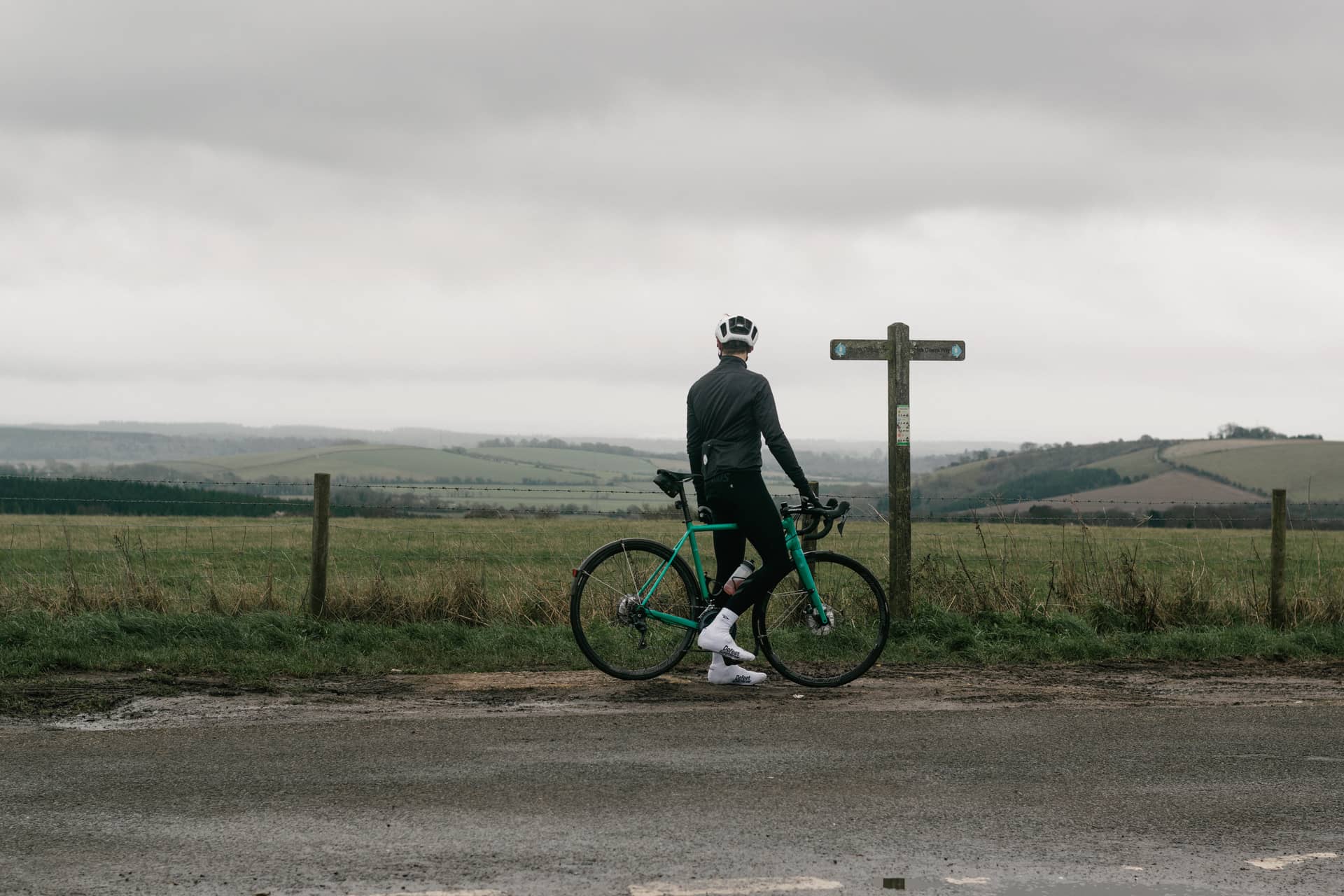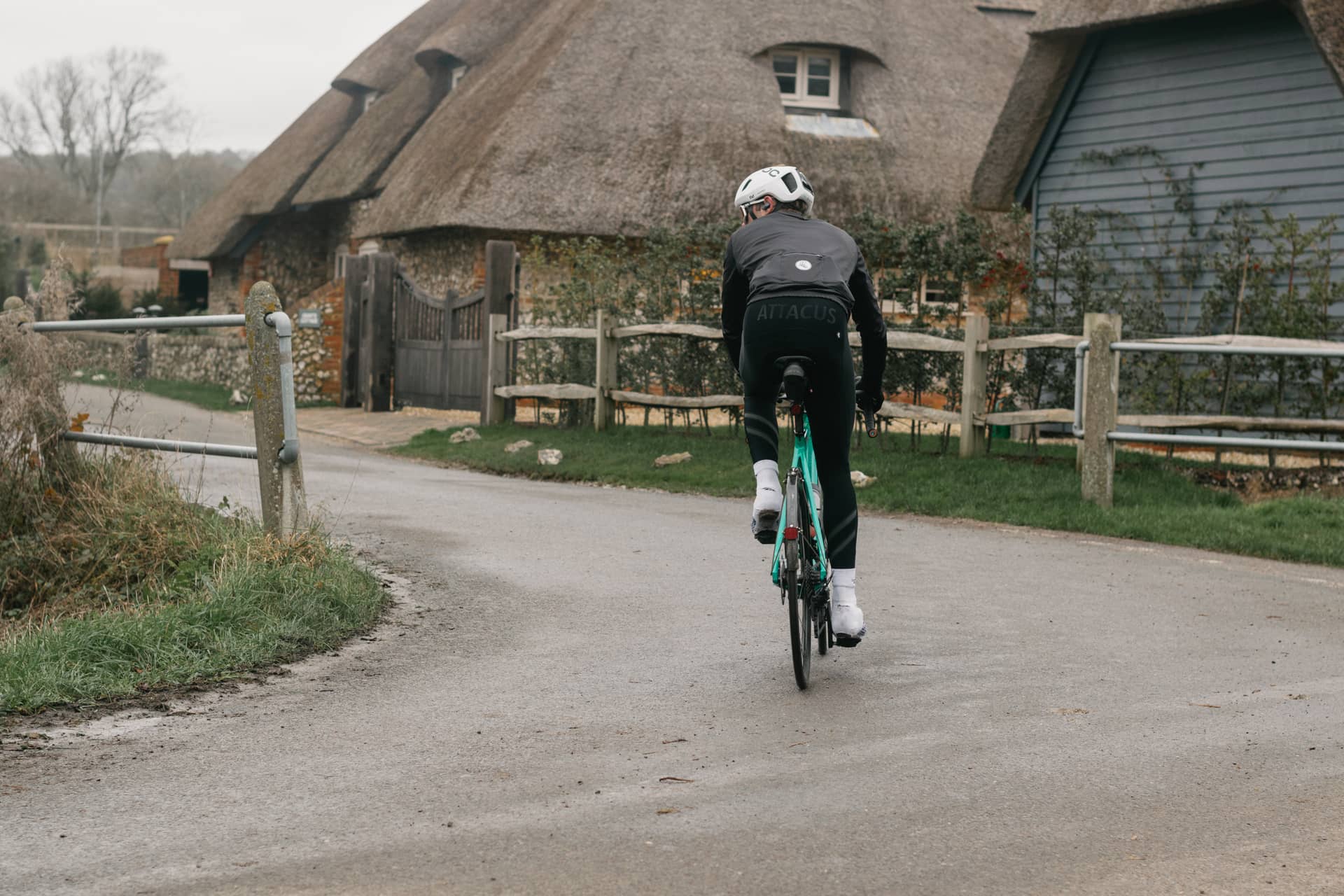When the Power to Weight Ratio Bottoms Out

I was so focused on results, and these somewhat arbitrary power-to-weight ratios, watts, and times up different climbs. It took me away from a more holistic view of sustainability, resiliency, and durability as an athlete.”
Like many athletes, a passion for racing ran deep in Jackson Long’s family. He began tagging along to his father’s cycling races and entering on his own at twelve. Growing up in Sun Valley, Idaho, a place better known for mountain sports and snowy winters, he was the only kid in school choosing pavement over single-track. “For better or worse,” his identity became the fusion of that uniqueness and early success on the bike: Jackson the cyclist.
As he climbed through the junior ranks, exciting opportunities arose, like racing in Europe and a spot on the renowned University of Colorado (CU) team in Boulder. Sharing what he called “every young cyclist’s dream” of racing the Tour de France, it seemed the groundwork was being laid for a pro career. He was living in an endurance sport mecca and earning strong results in events across the country, both in amateur and collegiate races.
Working hard to take his training and racing to the next level, Jackson’s focus became increasingly singular and his lifestyle more monk-like. This intensity was, to some extent, normalized by the environment he was immersed in. Boulder, which he jokingly referred to as “the exercise addiction capital of the world”, has a very high density of professional and elite amateur athletes. But it wasn’t all bad. He has fond memories of living in the freshman dorm with a teammate, setting up their trainers on cold winter mornings with their door open, and receiving strange looks from students returning from late nights of more typical college weekend behavior.
In his second year, he was picked up by a high-level amateur team and offered the chance to train and race full-time. Taking the spring semester off from school, he headed south from snowy Colorado to the dry desert roads of Tucson, Arizona, where he lived in a house tucked away in the surrounding hills with a few teammates. Eat, sleep, and train. It’s an environment many aspiring athletes dream of, yet for some, it can be a recipe for overtraining, rocky mental health, and REDs.
Looking back, that’s where the dark side started to emerge. I was working with a coach who I don’t think had any ill intent, but just didn't have any experience or training in nutrition and was providing some pretty poor recommendations and guidance."

Combine that with being extremely isolated, living with just one other person up in the hills for months, training five or six hours a day, and having no other social outlet. You kind of just get fixated on certain things. Cycling, in particular, is such a metric-driven game: you focus so much on your power meter, on times up certain climbs. That’s when I started to become hyper-obsessive around food, weight, and specifically carbohydrates.
As the rabbit hole closed in around him, all Jackson could think about was his desire to maximise his power-to-weight ratio. But rather than looking for ways to improve how much power he could push through the pedals, he focused on manipulating the denominator of the ratio. Carrying less weight would surely lead to faster times, or so he believed.
I started using really negative practices in an effort to become as light as I could.”
And, like many athletes who struggle with REDs know, his carb and calorie restriction worked initially. But the improvement was short lived.
I was climbing faster at first, but eventually it backfired with sickness, injury, and poor performance. It killed my season, and it actually killed my career because that season was sort of pivotal to make it to the professional level.”
From the other side of recovery, Jackson can see his wide array of symptoms induced by low energy availability as interconnected, but at the time, he knew nothing of REDs. Becoming progressively more miserable in his monastic training environment, he could tell his recovery from hard sessions was repeatedly compromised, and he had zero sex drive, which, "as a healthy 20-year-old, should not be happening,” he laughed.
He became “incredibly fatigued,” barely able to get out of bed except for training. His performance during sessions grew increasingly inconsistent. “Sometimes I’d go out for intervals and feel amazing; other days, I’d be totally tanked.”
When race season arrived, he “had no gas.” His spring stage races ended in DNF (did not finish) after DNF. Ironically, his sought-after power-to-weight ratio declined rapidly. But what frustrated him most was the mismatch between his training performance and race-day outcomes. “I had amazing 20-minute power on local climbs, but in 120-mile road races, it just wasn’t there. Looking back, it’s obvious: I was under-fueled.”
You need resiliency and durability. You need glycogen stores.”
While there were plenty of lows in racing and training, the most eye-opening situation occurred off the bike. That spring, he vividly remembers attending a chocolate-themed party at the home of a family friend. His body screaming desperately for energy, he suddenly found himself feeling out of control at the dessert table, consuming all of the cookies, cakes, and chocolates he could get his hands on; eating until he felt sick. “To me, that was a signal of: This is dysfunctional. There's something wrong here if I'm craving (sweets) and going overboard this much. There’s something wrong.”
Looking for answers, he had some blood work done, which showed a number of biomarkers that were “off”: low B12, iron deficiency, poor immune function, inflammation. After “constantly” being sick, he also received a diagnosis of walking pneumonia.
He questioned whether he had what it took to become a pro cyclist – or if he did, but this was the price he’d have to pay, was it still worth it?
I was getting ripped away from the original reason why I started riding a bike in the first place, and I was losing the love of it. It was such a chore, and it felt like I was smacking my head against the wall every day because I just had no energy.”

Deciding to take a step back, he returned to CU and resumed classes to pursue his interests in physiology and nutrition. Though it was not his original intent, his studies helped him begin to unpack and understand the impact of the combination of restrictive eating and high training volume had on his body.
Taking a break from his bike, Jackson began trail running with friends around Boulder and quickly sustained a stress fracture in his pelvis. Shortly after, he had the chance to get a DEXA scan during an exercise physiology lab, which showed he had “shockingly low” bone density and was advised to discuss it with a physician.
Sitting in a follow up lecture, he remembers learning about the female athlete triad and identifying with the symptoms, leaving him more confused than informed.
I just remember listening to the professor talk about the triad, and I was like, this is kind of happening to me. And I was looking around like, am I the only one?”
Once REDs was introduced by the IOC, Jackson realised he was definitely not alone.
Confronted with low bone density, abnormal blood work, and the massive decline in energy and performance following his stint in Arizona, Jackson felt eager to make a change in his path. There was no roadmap available, but he knew he needed to do “something radically different.”
He now credits two primary factors with his recovery from REDs: taking time away from sport, and focusing on nutrition. Specifically, he did a 180 from a low carb, protein-centric paleo-style diet, to adopt a fully plant-based focus.
Jackson recognises that this type of diet could also be seen as restrictive, limiting, or even disordered, and is not for everyone. But in his experience, “it pulled me out of the hole for a number of reasons.
“First, it allowed me to eat enough carbohydrates. That’s really the basis of this diet. But it also made me more connected with what I was eating and zoom out from just myself. I was learning about the environment, I was learning about animal welfare, and long-term health and longevity. And I really became passionate and interested in nutrition, which sort of took me out of the fairly selfish pursuit of performance in cycling.”
Finally fueling his body properly, and giving it the time to heal, he began to “fall back in love with cycling” and his passion for cycling had been “re-energized.” He still enjoyed racing, but mostly found joy in long rides with friends.
I went on an amazing trip with a couple of my racing buddies to Europe, and we just toured around on our bikes. To me, that's what sport is all about. I am still very competitive, and I still love racing, but that very low moment was a big lightbulb moment for me in the sense of: this is not how I want to be expressing myself as an athlete.”
Eight years after REDs in males began to be described in research, he believes gaps remain in athlete education and understanding. “I think there's still a huge lack of awareness, because it's less apparent in males. There's no menstrual cycle to lose.”
Though Jackson believes the culture is changing for the better, his experiences highlighted how ingrained in male athlete culture some dysfunctional behaviours had become, particularly carbohydrate restriction and fear of weight gain.
“It was almost like a masculine thing in cycling to go for these six hour ride with all these hard efforts, and then come back and eat a salad and go to bed. In a lot of the circles I was in, of different riders and even coaches, there was such a culture of under-eating to lose weight as if it was a macho thing, which is so weird and messed up.”
In contrast, he has seen more “behind the scenes” restrictive tendencies in women; more whispers and subtle behaviours, versus loud, uncensored comments and glorified actions.
Now a Registered Sport Nutritionist with a degree in Integrative Physiology and masters in Applied Nutrition, Jackson works with athletes of all levels to interrupt diet-culture narratives and improve their nutrition. He also coaches youth cycling and cross-country skiing, and is passionate about spreading awareness about REDs and educating athletes about the importance of carbohydrates and proper fueling for their long-term health and performance.
I am so adamant about the importance of fueling for sustainability, not only in your athletic career but also in day to day life. I like the analogy of: If we think about ourselves as a sponge, we can only handle and soak up so much training. And we also want to be able to squeeze the most out of the sponge in each session to get the most training adaptation. Every time we do that under-fueled, we're starting with a smaller sponge, or we're not able to squeeze as much out.”
Check out Jackson's nutrition and coaching site, here.